 6
6




 1
1
 13. 04. 2018
13. 04. 2018

Historiography is very strongly dependent on other sciences, but most of all on geology. Still, he gives us examples of being subject to entirely different interests.
These interests can be national, ethnic, religious, economic or purely personal, which lead to history being directed in the desired direction.
When British archeologist Katherine Routledge came to 1914 Easter islands, she quickly recognized that the Polynesian islanders' awareness of the statues of Moai and Ahus was based on more than noble foundations. In her diary, she wrote that the islanders knew nothing of their construction, she also knew of the probable existence of former inhabitants, Langohren (long-haired) whose description was much more relevant to these Moais than the Polynesians.
From previous reports, the first visitors also knew that during the first contacts with Europeans, these islands had a settlement consisting of less than one thousand people. The poor islands, consisting mainly of porous rocks of volcanic origin, did not allow more inhabitants, as the fauna consisted more or less of several species of seabirds and fishing was limited to coastal hunting, as there were no trees to allow islanders to build ships.
Such a small population and given conditions did not in any way allow the construction of more than nine hundred huge statues and their elevated in front of the platforms. Nevertheless, Mrs. Routledge the use of these pre-plateaus called Ahus for the funeral purposes of the Polynesians as the basis of her thesis, all these things were to be made by the Polynesians and used for funeral purposes and their own statues (Moais) to worship individual outstanding personalities.
This thesis was never questioned, the island population took it over and in the meantime almost completely forgot their own knowledge. It was more or less personal and professional interests that led Routledge to this thesis, so that after a nearly one-year stay in the Easter Islands she could return with a concrete result.
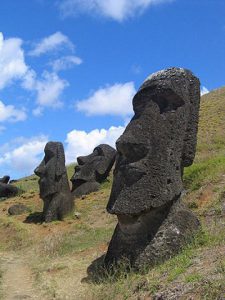 (Some so-called "Moai" on Easter Island, their too rapid assignment to the ancestors of the current inhabitants of the Polynesian islands by British archaeologist Katherine Routledge, can serve as an example of a scientific impasse based on the personal interests of individual researchers with severe consequences.)
(Some so-called "Moai" on Easter Island, their too rapid assignment to the ancestors of the current inhabitants of the Polynesian islands by British archaeologist Katherine Routledge, can serve as an example of a scientific impasse based on the personal interests of individual researchers with severe consequences.)
1947 discovered an American pilot when flying over China in Shaanxi Province the Great Pyramid. Later there were even seventy Pyramids located there. However, these Pyramids are not built of stone, but soil was used to build them.
Modern aerial photographs show that, The three largest of these Pyramids are built in a similar formation as the three Great Pyramids of Giza. Western researchers who tried to obtain an excavation permit were denied this from local authorities.
Chinese science has long claimed the isolated development of Chinese culture, without the influence of other cultures. This argument was supported in Mao's time for national and economic reasons. Doubts about this view could not be dispelled by the Chinese leadership (The Great White Pyramid of China (Videos)).
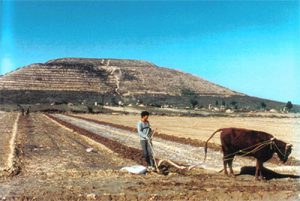 (One of the Great Pyramids in China's Peovinz Shaanxi, whose research is likely to be highly selective for decades for political reasons)
(One of the Great Pyramids in China's Peovinz Shaanxi, whose research is likely to be highly selective for decades for political reasons)
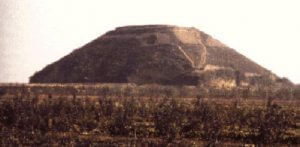 (One of three of the nearly 100-meter-high Pyramids at Xian) Mummies have been found in the Taklamakan Desert since the early 20th century. The Taklamakan Desert covers almost two-thirds of Xinjiang province in northwest China. The population of the province belongs to the Uyghur Turkmen, who have lived here since the ninth century. However, the share of the Chinese population has been steadily increasing. (China: Die 150.000 Year Old Pipe Under One Pyramid (Video))
(One of three of the nearly 100-meter-high Pyramids at Xian) Mummies have been found in the Taklamakan Desert since the early 20th century. The Taklamakan Desert covers almost two-thirds of Xinjiang province in northwest China. The population of the province belongs to the Uyghur Turkmen, who have lived here since the ninth century. However, the share of the Chinese population has been steadily increasing. (China: Die 150.000 Year Old Pipe Under One Pyramid (Video))
The mummy of the Taklamakan desert, which has meanwhile been found far over a hundred, estimated to be about four thousand years old and clearly showing the features of Caucasians: an elongated head shape, a distinctive nose, sunken eyes, blond, brown or red hair, some almost 180 cm tall. Tissue samples indicate a genetic group of the Europoid race. The history of the Uighurs confirms this. When their ancestors came to the area around 800 AD, they met the Indo-European people of the Tocharers, with whom they mingled.
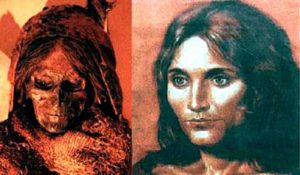 (Left: Perhaps the best known, called "Beauty by Loulan, "the mummy Tocharer of the Taklamakan desert. Right: Cartoon reconstruction of her face, clearly showing the features of the Caucasus)
(Left: Perhaps the best known, called "Beauty by Loulan, "the mummy Tocharer of the Taklamakan desert. Right: Cartoon reconstruction of her face, clearly showing the features of the Caucasus)
For decades, Western scientists and cameramen have not received permission from the Chinese authorities to inspect mummies. It was not until 1997 that a team of scientists, including archaeologist Jeanine Davis-Kimball, obtained permission to prove the existence of the Amazons.
There have been a number of very unsatisfactory events, and authorized visits to the museums in which these mummies have been exhibited have been canceled. In one case, a team was set up for a manipulated tomb, in which lay a headless mummy, which scientists had previously seen intact in a museum in the storage area. Davis-Kimball and others concluded that the authorities had severed their heads to prevent pictures of the Caucasian.
Only with the help of a Chinese guide did Davis-Kimball manage to visit a Museum at night, where she could take these pictures. The motive of the Chinese official party to prevent a precise survey was clearly of a national nature, but there are also economic interests behind it, as deposits of a source of natural oil are assumed in the province of Xinjiang.
The New Zealand government commissioned excavations in the Waipoua Forest in the north of the North Island. The work began in the late 1970s and lasted until the early 1990s. In 1988, the chief archaeologist sent the National Archives fourteen sheets of handwritten notes warning that these sheets should not be published until 2063.
Archaeologists who were interested were rejected for years, and it was not until 1996 that a researcher, with the help of a lawyer, fought for the fourteen letters, which turned out to be a list of data and drawings collected over decades. Government posts were still reluctant to make the material available to the public. Many people who wanted to see these excavation sites in the Waipoua Forest relied on the Te Roroa Stammes communal sites in Waipoua. There they were denied permission.
When some daredevils visited the excavations on their own, they were accompanied and threatened by members of the tribe, others found tickets on their vehicles, identifying them as thieves, who had to count on an appropriate punishment. It was only slowly that about XNUMX non-Maori Polynesian stone structures were excavated in the Waipoua Forest on an area of more than two hundred hectares in six hundred places.
Here, the interests of the Maori ethnic group were crucial in suppressing the information related to their economic interest provided to the Maori as "indigenous peoples" in the form of subsidies. One hundred years ago, the Maori told Europeans about encounters with the original inhabitants of New Zealand, albeit only in the form of mythical stories, but this knowledge fell into oblivion over time or was displaced.
Some historians and interested parties have analyzed this apparent attempt to suppress information, backed by government posts, and discovered a number of findings about the existence of former residents before the Maori, which were never made public. In one case, exposed wavy, rusty, and brown hair found in a rock cave, which gave the impression of being of European origin, was removed from the Museum of the Memory of the Auckland War. In 1962, the American archaeologist Cynthia Irwin-Williams discovered an interesting site of very old stone artifacts about 120 km southwest of Mexico City. Under her leadership, excavations of stone artifacts and fossils of animals were collected from the old rock layers.
Difficulties arose when determining the age of these findings. Irwin-Williams relied on their ages of 20.000 to 25.000 years, significantly exceeding the scientific consensus for the settlement of the "New World" across the Bering Strait between 13.000 and 16.000 years ago. (Suppressed and Occult Background for discovering and conquering America (Videos)). Geologists Harold E. Malde and Virginia Steen-McIntyre have examined these findings by various methods and arrived at unpleasantly surprising results 250.000 years ago. There was a dispute between Irwin-Williams and geologists who published their work in 1981. Geologist Steen-McIntyre lost her professorship as a result.
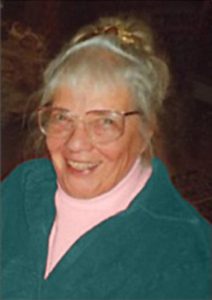 (American geologist Virginia Steen-McIntyre (pictured) was scientifically put on the ice because she was reluctant to withdraw the findings, which, among other things, throw the current paradigm of the origin of American settlements literally into a garbage dump). In 2004, the excavation sites were subjected to new biostratigraphic research. The result clearly confirmed the age of 250.000 years for these artifacts. Yet the settlement of America across the Bering Canal 15.000 years ago remains unchanged for most scientists.
(American geologist Virginia Steen-McIntyre (pictured) was scientifically put on the ice because she was reluctant to withdraw the findings, which, among other things, throw the current paradigm of the origin of American settlements literally into a garbage dump). In 2004, the excavation sites were subjected to new biostratigraphic research. The result clearly confirmed the age of 250.000 years for these artifacts. Yet the settlement of America across the Bering Canal 15.000 years ago remains unchanged for most scientists.
In Mahabharata, we heard about the town of Dwaraka, Krsna, which was shortly after leaving its body, absorbed by the sea. This happened according to the Hindu calendar when Dwapara Yugas was changed to Kali Yuga, our year 3.102 BC. This Dwaraka lay near the mouth of the Gomati River to Kachchh Bay. More precisely, Dwaraka, now Dwarka, is lying there, because today there is again a small town of this name. It is located in today's Indian state of Gujarat, which borders Pakistan in the north. The town lies on the coast, where Krishna's Dwarka disappeared under water more than five thousand years ago. During the 1960s, during excavations in the new Dwarka, artifacts were found indicating its very old settlement. The National Institutes of Oceanography and Archeology then launched the first Dwarak submarine survey in 1979, which was successful.
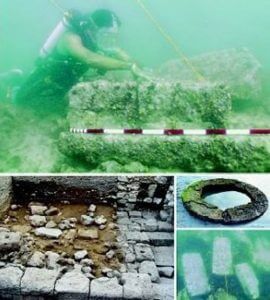 (Pictures of the underwater archaeological works of the sunken metropolis of Dwaraka with its finds. When this ancient city sank in Kachchh Bay, it is still the subject of disputes)
(Pictures of the underwater archaeological works of the sunken metropolis of Dwaraka with its finds. When this ancient city sank in Kachchh Bay, it is still the subject of disputes)
Since 1981, the seabed in front of Dwarak has been systematically examined in the area extending about one kilometer from the coast and the remains of a fortified city, stone sculptures, copper coins and a seal with a three-headed animal have been found. Such a seal is also mentioned in preserved memoirs; Indian seekers are thus sure that they have found confirmation for Krishna's Dwaraka.
One participant expressed his astonishment at the attitude of Western science, saying, "Why didn't the rediscovery of Dwaraka attract as much attention as Henry Schlieman found when ancient Troy was found?" . The project leader says: “Although representatives of Western, empirical science have determined the age of Dwarak to be 3500 years old, the old, Vedic, astronomical texts agree, and they are now familiar with the Vedic tradition, that today's Kali Yuga began on October 1500 BC. Kṛṣṇa's death and the sinking of Dwaraka occurred shortly afterwards. Therefore, Dwaraka cannot be less than 3500 years old. "
The question remains, who is right? Work on Dwarak continues, meanwhile on one further into the sea-reaching area. The first submarine museum is planned there. For this purpose, an access pipe made of acrylic will be laid on the bottom, which will make it possible for visitors to see the remains of the sunken city, according to a project approved by UNESCO. (Survey of Prehistoric Civilizations and Their Extensive World Connections (Videos)).
These examples show the interests and pressures of the history of science and which scientific methodology often takes into account. Many other examples can be given.